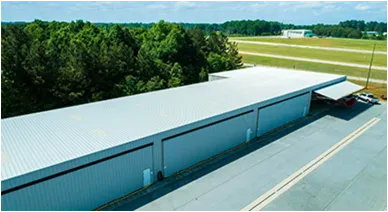- Afrikaans
- Albanian
- Amharic
- Arabic
- Armenian
- Azerbaijani
- Basque
- Belarusian
- Bengali
- Bosnian
- Bulgarian
- Catalan
- Cebuano
- Corsican
- Croatian
- Czech
- Danish
- Dutch
- English
- Esperanto
- Estonian
- Finnish
- French
- Frisian
- Galician
- Georgian
- German
- Greek
- Gujarati
- Haitian Creole
- hausa
- hawaiian
- Hebrew
- Hindi
- Miao
- Hungarian
- Icelandic
- igbo
- Indonesian
- irish
- Italian
- Japanese
- Javanese
- Kannada
- kazakh
- Khmer
- Rwandese
- Korean
- Kurdish
- Kyrgyz
- Lao
- Latin
- Latvian
- Lithuanian
- Luxembourgish
- Macedonian
- Malgashi
- Malay
- Malayalam
- Maltese
- Maori
- Marathi
- Mongolian
- Myanmar
- Nepali
- Norwegian
- Norwegian
- Occitan
- Pashto
- Persian
- Polish
- Portuguese
- Punjabi
- Romanian
- Russian
- Samoan
- Scottish Gaelic
- Serbian
- Sesotho
- Shona
- Sindhi
- Sinhala
- Slovak
- Slovenian
- Somali
- Spanish
- Sundanese
- Swahili
- Swedish
- Tagalog
- Tajik
- Tamil
- Tatar
- Telugu
- Thai
- Turkish
- Turkmen
- Ukrainian
- Urdu
- Uighur
- Uzbek
- Vietnamese
- Welsh
- Bantu
- Yiddish
- Yoruba
- Zulu
Dec . 05, 2024 05:39 Back to list
The Evolution and Advantages of Steel Building Structures
Steel building structures have transformed the landscape of modern architecture and construction over the past century. From skyscrapers that define urban skylines to expansive warehouses in industrial parks, the versatility and resilience of steel have made it a primary material in the construction industry. This article explores the evolution of steel structures, their advantages, and their pivotal role in shaping sustainable architecture.
The use of steel in construction can be traced back to the 19th century. The advent of the Industrial Revolution brought about significant advancements in steel manufacturing, allowing for the mass production of high-quality steel. This marked the beginning of a new era in construction, where buildings could reach unprecedented heights and span larger spaces. The introduction of steel frame construction in the late 1800s revolutionized architectural design, enabling the construction of iconic structures like the Eiffel Tower and the first steel-frame skyscrapers in Chicago and New York City.
One of the key advantages of steel building structures is their strength-to-weight ratio. Steel is incredibly strong, allowing for slender and lightweight designs that are not feasible with traditional materials like wood or concrete. This characteristic enables engineers to create vast open spaces without the need for intermediate columns, enhancing the aesthetic appeal and functional flexibility of buildings. For commercial and public buildings, large, open-plan interiors foster creativity and collaboration.
The durability and resistance of steel against various environmental factors are significant advantages as well. Steel structures are inherently resistant to fire, pests, and mold. Unlike wooden structures, steel does not warp, crack, or shrink over time, ensuring a long lifespan for buildings. This durability also means that steel structures require less frequent repairs and maintenance, translating to cost savings over time. Additionally, steel can withstand extreme weather conditions, making it an ideal choice for construction in areas prone to hurricanes, earthquakes, or heavy snowfall.
steel building structures

Sustainability is a crucial consideration in modern construction practices, and steel building structures have emerged as a sustainable choice. Steel is 100% recyclable, and a significant portion of new steel is produced from recycled content. This reduces the demand for new raw materials and minimizes the environmental impact of mining and manufacturing. Furthermore, the energy efficiency of steel buildings can be enhanced with the use of insulation, energy-efficient windows, and sustainable building practices. As a result, steel structures can contribute to achieving green building certifications, such as LEED (Leadership in Energy and Environmental Design).
Innovative design techniques and advancements in technology have further expanded the possibilities for steel structures. The integration of computer-aided design (CAD) software allows architects and engineers to create complex geometries that were once unimaginable. Steel can be pre-fabricated off-site, reducing construction time and the associated labor costs. This precision in manufacturing also leads to less waste and more efficient use of materials.
However, despite the numerous advantages of steel building structures, some challenges remain. The initial cost of steel can be higher than traditional materials, which may deter some builders, especially for smaller projects. Additionally, the thermal conductivity of steel can lead to energy inefficiencies if not properly insulated. These issues can be addressed through careful planning and the implementation of cost-effective designs that maximize the benefits of steel.
In conclusion, steel building structures represent a remarkable evolution in construction technology, offering unparalleled strength, durability, and versatility. They have transformed architectural possibilities and contributed to sustainable building practices. As the demand for innovative and eco-friendly structures continues to grow, steel's role in the construction industry is likely to expand even further. By harnessing the unique properties of steel, architects and builders can create iconic structures that stand the test of time while addressing the pressing challenges of modern society. The future of steel in construction looks brighter than ever, paving the way for a new era of design that balances aesthetics, functionality, and sustainability.
-
How Do Prefabricated Steel Structures Transform Modern Construction?
NewsJul.14,2025
-
How Do Prefabricated Metal Buildings Redefine Modern Construction?
NewsJul.14,2025
-
How Do Prefab Insulated Metal Buildings and Steel Structures Revolutionize Modern Construction?
NewsJul.14,2025
-
How Do Pre - Engineered Steel Structures Redefine Modern Construction?
NewsJul.14,2025
-
Advancing Modular Construction with Prefabricated Metal Structures
NewsJul.14,2025
-
Advancing Industrial Infrastructure with Prefabricated Steel Solutions
NewsJul.14,2025
Products categories
Our Latest News
We have a professional design team and an excellent production and construction team.












